
As has been the case lo these many years, the heavily-juried, very well attended and extremely popular, not to mention oh-so-prestigious New York Film Festival, now in its 51st year, not only occurs simultaneously with VIFF but share a raft of screenings — Kathy Evans and Selina Crammond, the fine, hard-working folks in VIFF Print Traffic, on the phone and posting frantic e-mails to the programming folks at NYFF51 to ensure that the one existing “print” of the film that New York has in its possession makes its salutary way to our shores for your edification and screening pleasure.
Day Two of VIFF 32, then, is Day One of NYFF 51.
If you’re confused, as is the case with many VIFF 2013 supporters, as to which films to attend, and are seeking some early direction in that regard (VanRamblings, of course, offered early insight in the days leading up to Fest commencement), and would love to have attended NYFF51 but time or circumstance prevent such (or you’re just over-the-moon supporters of VIFF, and good for you for that), please find below the list of 15 films — a few of which we will highlight — that our very own and very special VIFF 2013 (or VIFF32, if you will), and NYFF51, will share this autumn (note: the titles of the NYFF films listed below link to the VIFF website, so as to provide you with scheduling info, and the opportunity to purchase tickets).
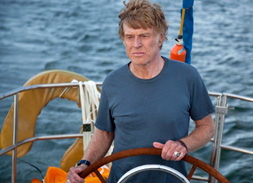 |
All is Lost. Robert Redford, as you’ve never seen him before, stars in this riveting survival story in which a lone sailor finds his yacht sinking after a collision with a discarded shipping container in the middle of the Indian Ocean. As the days pass and his options steadily dwindle, the luckless and nameless protagonist - identified in the credits as “Our Man” - takes every step possible in a struggle for self-preservation that puts his intelligence and practicality to the ultimate test. Focusing on a sole individual contending with the forces of nature who speaks only a handful of words throughout, this remarkable second effort by director J.C. Chandor is a genuine technical feat, all the more impressive for being the diametrical opposite of his debut Margin Call, with its ensemble cast, interior locations, and intricate dialogue-driven action. The film belongs to Redford’s fearless performance, alone onscreen from start to finish, facing the prospect of death with quiet determination.
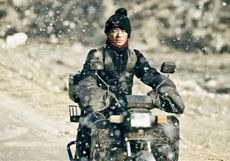 A Touch of Sin. Jia Zhangke’s bloody, bitter film finds the great Chinese filmmaker entering new genre territory, but retaining his commitment to the marginalized and oppressed — this time by way of four overlapping parallel stories, each inspired by real-life acts of violence. A miner (Jiang Wu) struggles with corrupt village leaders. A migrant worker (Wang Baoqiang), returning home, gets his hands on a firearm. A sauna hostess (Jia’s wife and muse, Zhao Tao) endures a series of humiliations over the course of an affair with a married man. A young man (Luo Lanshan) moves to a new town only to find himself trading one thankless, demoralizing job for another. The cumulative portrait, filled with despair and rage, is of a modern-day China undergoing rapid, convulsive changes and creeping cultural amnesia.
A Touch of Sin. Jia Zhangke’s bloody, bitter film finds the great Chinese filmmaker entering new genre territory, but retaining his commitment to the marginalized and oppressed — this time by way of four overlapping parallel stories, each inspired by real-life acts of violence. A miner (Jiang Wu) struggles with corrupt village leaders. A migrant worker (Wang Baoqiang), returning home, gets his hands on a firearm. A sauna hostess (Jia’s wife and muse, Zhao Tao) endures a series of humiliations over the course of an affair with a married man. A young man (Luo Lanshan) moves to a new town only to find himself trading one thankless, demoralizing job for another. The cumulative portrait, filled with despair and rage, is of a modern-day China undergoing rapid, convulsive changes and creeping cultural amnesia.
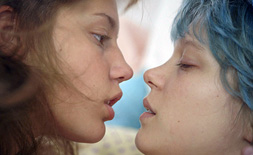 Blue is the Warmest Colour. Abdellatif Kechiche’s newest film, based on Julie Maroh’s graphic novel, was the sensation of this year’s Cannes Film Festival even before it was awarded the Palme d’Or. Adèle Exarchopoulos is Adèle, a young woman whose longings and ecstasies and losses are charted across a span of several years. Léa Seydoux (Midnight in Paris) is the older woman who excites her desire and becomes the love of her life. Kechiche’s movie is, like the films of John Cassavetes, an epic of emotional transformation. Blue pulses with gestures, embraces, furtive exchanges, and arias of joy and devastation, some verbal and some physical (including the film’s now celebrated sexual encounters between the two actresses).
Blue is the Warmest Colour. Abdellatif Kechiche’s newest film, based on Julie Maroh’s graphic novel, was the sensation of this year’s Cannes Film Festival even before it was awarded the Palme d’Or. Adèle Exarchopoulos is Adèle, a young woman whose longings and ecstasies and losses are charted across a span of several years. Léa Seydoux (Midnight in Paris) is the older woman who excites her desire and becomes the love of her life. Kechiche’s movie is, like the films of John Cassavetes, an epic of emotional transformation. Blue pulses with gestures, embraces, furtive exchanges, and arias of joy and devastation, some verbal and some physical (including the film’s now celebrated sexual encounters between the two actresses).

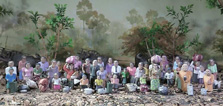
The Missing Picture. Filmmaker Rithy Panh has spent his career documenting and reflecting on the atrocities committed in his homeland by the Khmer Rouge. During Pol Pot’s dictatorship, Panh watched most of his family members disappear – some were taken away, others died slowly of starvation. In The Missing Picture, Panh revisits his own memories of those four years in the late 70s when millions of lives were extinguished and a culture was almost eradicated, through spoken words and “missing” images. Since all personal belongings were destroyed by the regime, Panh actually had to create his images of his family life and pre-1975 Phnom Penh out of clay, plasticene, fabrics and other materials. The stillness of these little dioramas, of scenes both good (bustling streets, cozy kitchens and living rooms) and bad (life on a collective farm, working in the fields), acquires sad, unearthly overtones – this is a becalmed and lucid recounting of a nightmare.
Among the remaining films shared by the NYFF and VIFF are …
- Gloria. A refreshingly frank tale of sexual desire felt by those of a certain age, this wise, funny movie about a woman who decides to take the plunge into romance doesn’t strike a single false note.
- Nebraska. Alexander Payne’s portrait of a way of life and of the single life of one quiet, taciturn man, with its sharp comic edges, and wonderful characters, and an expressive use of black and white will delight and charm.
- Manakamana. Shot inside a cable car that carries pilgrims and tourists to and from a mountaintop temple in Nepal, Manakamana transcends the bounds of time and space.
- Le Week-end. Wistful Nick and demanding, take-charge Meg careen from harmony to disharmony to resignation and back again as they take stock and grapple with love, loss, regret and, disappointment, visiting Paris for a long weekend in hopes of rekindling their relationship — or, perhaps, to bring it to an end. Manakamana transcends the bounds of time and space.
- When Evening Falls on Bucharest or Metabolism. This rigorously structured new film from Corneliu Porumboiu (Police Adjective), the rhythms of the everyday — silences, pauses, hesitations; the anodyne discomfort of making conversation; the strangeness of so many temporary relationships between exhausted, edgy individuals.
- What Now? Remind Me. First-person filmmaking at its most intimate and expansive, Joaquim Pinto’s What Now? Remind Me emerged from a year in which the director — documentarian, producer, sound designer, and Lisbon film scene stalwart — endured an experimental clinical trial for HIV patients. An all-encompassing meditation on what it means to be alive, the films was winner of the Jury Prize at the 2013 Locarno Film Festival.
- Fifi Howls From Happiness. The film’s subject is the Iranian painter and sculptor Bahman Mohasses, who was a celebrated and iconoclastic figure in the pre-revolutionary 60s and 70s, known for his art as well as his merciless public pronouncements. A poetic self-portrait and a joyous celebration of freedom — to create, to destroy, to indulge, to pontificate and make withering judgments, and to live without regret.
- Particle Fever. Physicist-turned-filmmaker Mark Levinson was present to record the planning and construction of the 20 years in the making 18-mile long super-collider at CERN in Switzerland. The idea: to recreate conditions immediately after the Big Bang, and allow us to move several steps closer to an understanding of the origin of matter. An epic adventure story, the film, brilliantly edited by Walter Murch, is truly a thrill a minute.
- The Invisible Woman. Charles Dickens’ 13-year affair with Nelly Ternan — he was 45 and she 18 when they met in 1857 — was one of literary history’s best-kept secrets until the publication two decades ago of Claire Tomalin’s sensational investigative biography of the young actress. Felicity Jones’s multifaceted, unsentimental performance as Nelly, who made the best of an imperfect situation and was complicit in keeping the affair secret for decades after Dickens’ death, is nothing less the revelatory.
- Stray Dogs: In the newest film from Tsai Ming-liang, a single father makes his meager living holding up an advertising placard on a traffic island in the middle of a busy highway. His children wait out their days in supermarkets before they eat with their father and go to sleep in an abandoned building. Minimal in its narrative content and syntax, as visually powerful as it is emotionally overwhelming, and bracingly pure in both its anger and its compassion. One of the finest works of an extraordinary artist.
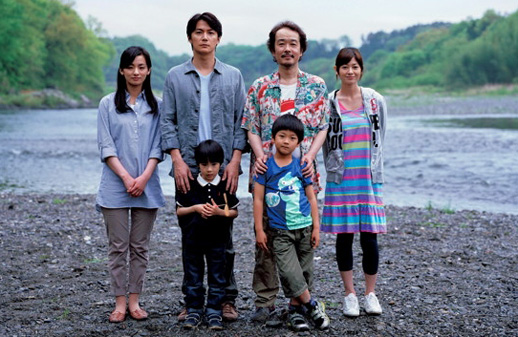
Like Father, Like Son. The “switched at birth” urban legend and the Nature-vs.-Nurture debate provide Hirokazu Kore-eda with a fresh opportunity to revisit his ongoing preoccupation with family dynamics and parent-child relationships in contemporary Japan. The life of go-getting workaholic architect Ryota (Masaharu Fukuyama) — one of comfort and quietly ordered affluence with his wife Midori (Ono Machiko) and son Keita (Keita Ninomiya) — is violently overturned when hospital administrators reveal the unthinkable: Keita is not his biological son. Due to a mistake made by a negligent nurse, his “true” son has been raised in the dishevelled but warm-hearted home of working-class shopkeeper Yudai (Lily Franky) and his wife (Yôko Maki). The different approaches of both couples to their excruciating dilemma and the gradual emotional awakening of the all-too-rational Ryota are at the core of this sensitive drama of family feeling, which showcases Kore-eda’s rich sense of humanity.